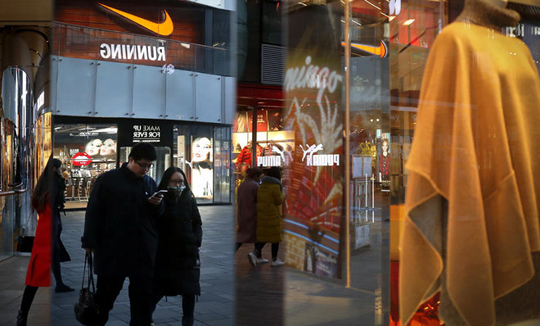Paris, Nov 23: President-elect Donald Trump's big-spending plan to revitalize US infrastructure could be just the ticket to drag the world economy out of its post-crisis torpor, experts say.

But there is a huge caveat, they warn: the plan's benefits would be eroded if Trump executes his avowed aim of putting “America first” and tearing up commercial pacts, potentially igniting a trade war.
The Republican property tycoon's team says he will devote $550 billion to rebuilding decrepit highways, bridges, tunnels, airports, schools and hospitals — something that President Barack Obama failed to persuade Republicans in Congress to back.
The idea has support from the International Monetary Fund, the Federal Reserve and Democrats, all keen to see the United States raise its productive capacity, despite the likelihood it will also ramp up its debt.
“All public money invested in US infrastructure — which badly needs it — can only be welcome,” said Ludovic Subran, chief economist at the trade insurance company Euler Hermes.
The United States suffers from congested highways, collapsing bridges and a ramshackle rail network. Bemoaning the state of US airports during the election campaign, Trump said “we've become a Third World country.”
Economies further afield would benefit at a time when Europe and Japan are struggling with the debilitating effects of deflation or anaemic growth.
“Inflation would spread everywhere in the world,” in a welcome filip to the central banks of Europe and Japan, according to Laurent Geronimi, a senior asset manager at the private bank Swiss Life.
Indeed, the bond markets have already signalled as much with trillions of dollars wiped off valuations since Trump's election — a sign that investors expect a debt-fueled spending splurge to drive up interest rates.
That would benefit millions of savers and investors in pension funds who have struggled since the 2008 financial crisis ushered in a period of rock-bottom rates across the West.
Emerging markets could also win out if the dollar continues its recent bull run sparked by expectations of higher inflation and borrowing costs.
“If the American currency appreciates, that's a good thing for us because we are exporters of oil and of raw materials that are priced in dollars. And when the dollar appreciates, we earn a bit more,” said Lucas Abaga Nchama, governor of the Bank of Central African States.
'Double-edged sword'
But inflation, of course, is a double-edged sword. Workers worldwide risk losing out in their pay packets — including those Americans who rallied to Trump's banner. US homeowners would also suffer from dearer mortgage costs.
And then there is the potential impact on global growth if Trump delivers on his pledges to rewrite the rules of trade in favor of blue-collar Americans.
Already on Monday, Trump said his new administration would immediately signal its withdrawal from the Trans-Pacific Partnership, a vast undertaking in free trade painstakingly negotiated by Obama's team that has yet to take force.
The incoming president is also threatening to upend the 1994 North American Free Trade Agreement, and a separate pact under discussion between the United States and Europe appears to be on life support.
At the same time, Trump accuses China of being a rogue trader guilty of stiffing the average American, and economists dread the potential for 1930s-style protectionism that could arise.
“If we do go into much more of an isolationist position, with protectionist policies, it seems only fair to expect a response from our trading partners,” said Standard & Poor's chief US economist Beth Ann Bovino.
“The worry of course is we could go into a tit-for-tat where everybody loses.”
Olivier Blanchard, a former IMF chief economist who is now a senior fellow at the Peterson Institute for International Economics in Washington, stressed that Trump will have to tread a fine line between pro-growth spending on infrastructure and depressive measures on trade.
Where the line falls will decide the difference between “expansion or recession,” he warned.





Comments
Add new comment